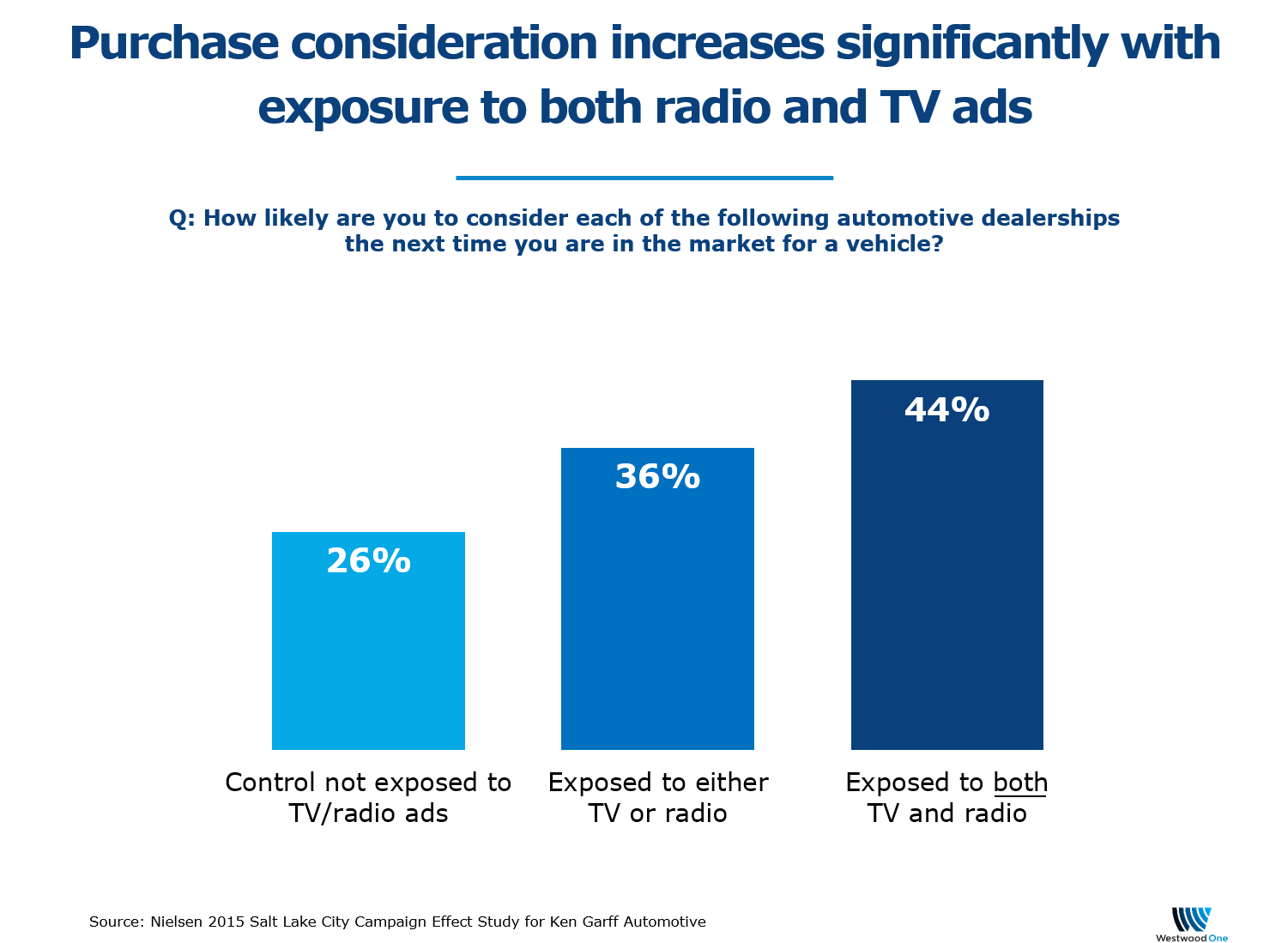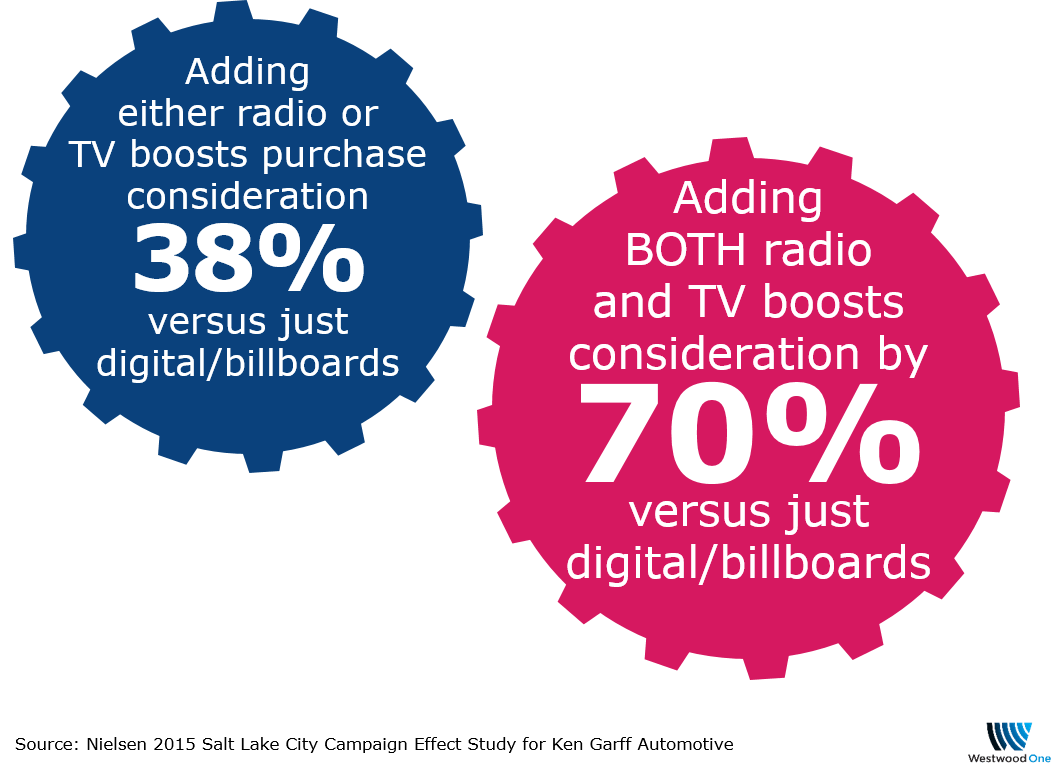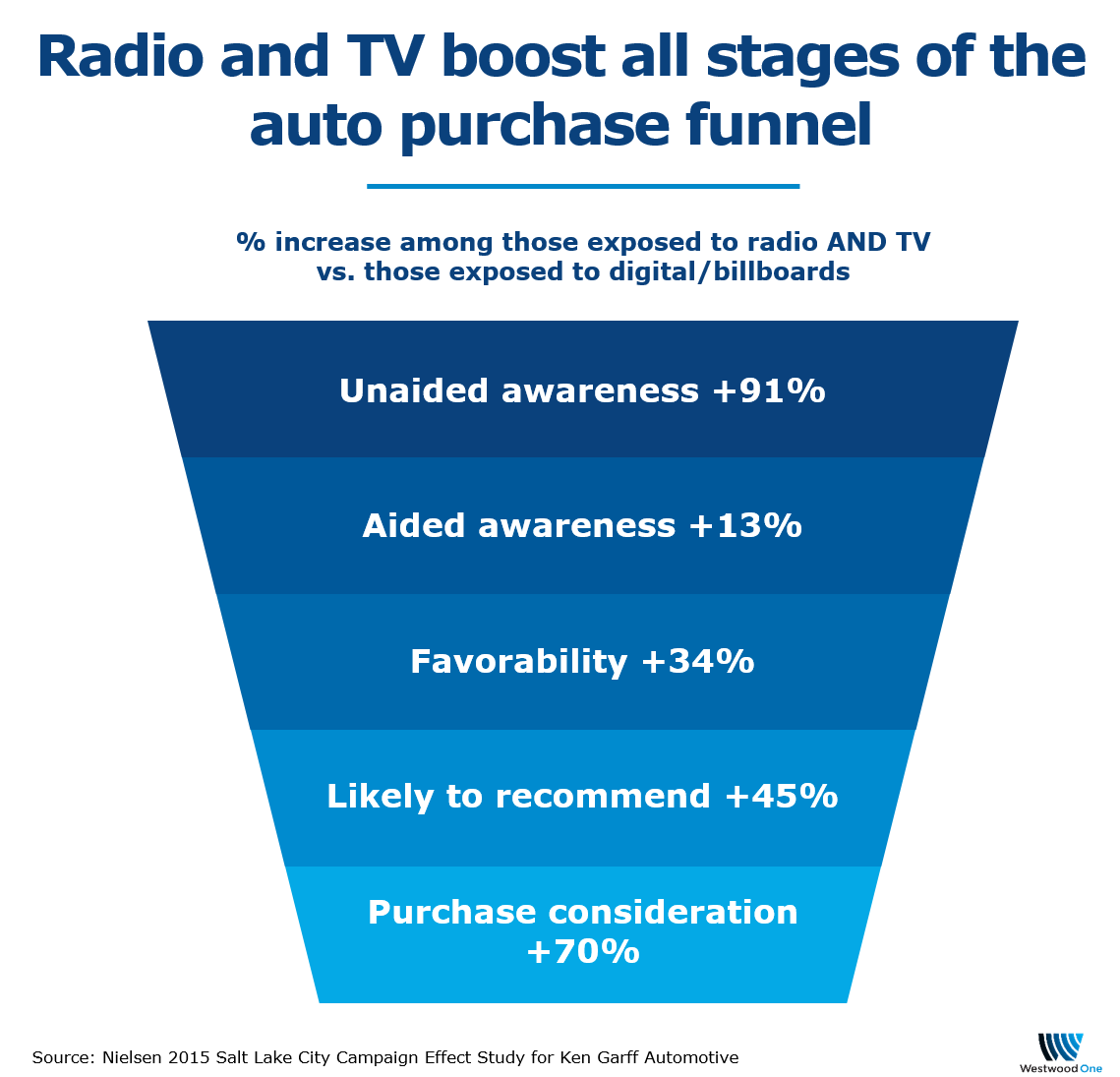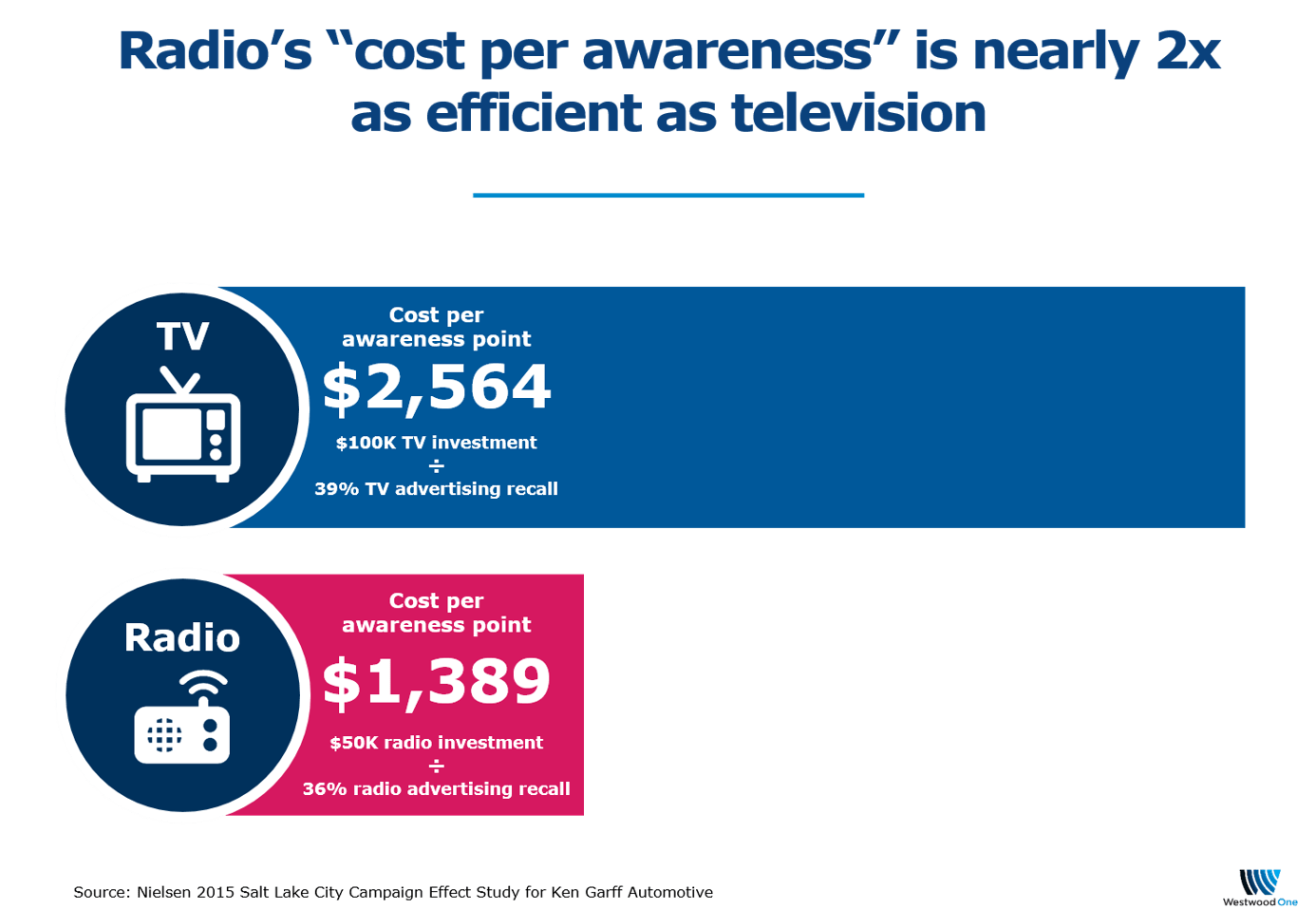Historic Auto Dealer Case Study: Radio Drives Results For Ken Garff Automotive
Do radio and TV drive sales for car dealers? Can it be proven? Questions the Utah Broadcasters Association wanted to answer.
In 2014, Ken Garff Automotive — recently ranked by Automotive News as the eighth largest auto retail group in the country — advertised in TV and radio. In 2015, they only used print, digital, and billboards.
Working with the Utah Broadcasters Association, Ken Garff Automotive agreed to a six-week radio and TV campaign. The broadcasters funded a Nielsen advertising effectiveness study. Here are six key findings:
1. Radio’s ad recall (36%) was nearly as strong as television (39%), despite the fact that twice as much money was spent in TV. While the campaign was only six weeks, the local broadcast media ad campaign earned strong awareness.
2. Digital and print ad recall were minimal. Ken Garff Automotive was using print and digital all through 2015. In Salt Lake City, very few consumers were able to recall Ken Garff Automotive digital and print advertising. While many car dealers have increased media spend on digital, does this effort get noticed? Does digital have an impact? This study reveals digital and print do not seem to break through.

3. Radio is the TV accelerator: purchase consideration increases significantly when consumers were exposed to both TV and radio ads.

It’s clear that adding local broadcast vastly improved purchase desire versus the prior media mix of only digital and billboards. Adding radio or TV boosts purchase consideration by 38%. Adding both radio and TV lifts purchase consideration by a stunning 70%.

4. Radio and TV boost all stages of the auto purchase funnel. Compared with those just exposed to digital and billboards, consumers exposed to the radio and TV ads saw a major increase in awareness, dealer consideration, and likelihood to recommend and purchase consideration.

5. Radio ads earned the highest consumer association for being the most informative and believable. Ken Garff Automotive used one 30 second radio ad and two television ads – a 15-second and a 30-second ad. Consumers described the radio ad as: “Short and to the point. Upbeat and friendly. Informative, 25% off, three locations.”

6. Radio’s “cost per awareness” is nearly two times as efficient as television. By far, radio is a more affordable option to raise brand awareness. “Cost per awareness” is calculated by dividing the total investment by the percentage of advertising recall. Compared with television’s $2,564 cost per awareness point, radio is only $1,389.

Conclusive evidence: radio gets results for auto dealers
This historic study provides auto dealers across the country with key insights:
- Radio ad recall is as strong as TV, digital and print recall is very low.
- Adding local broadcast to a digital/billboard media plan dramatically increases auto purchase consideration.
- Adding BOTH Radio and TV increases purchase consideration by 70% versus digital/billboards.
- Radio creative wins the images as informative and believable
- Radio’s “cost per awareness” is nearly 2x as efficient as television.
Pierre Bouvard is CMO of Cumulus Media | Westwood One. Follow him on Twitter and LinkedIn.
Contact activate@westwoodone.com today to find out how radio can elevate your marketing campaign.